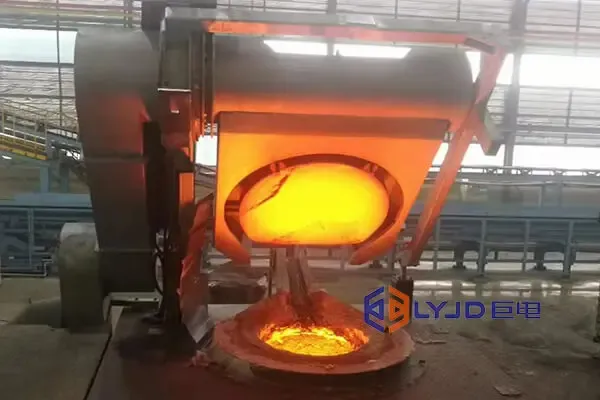Furnace used in casting
Furnace Used in Casting Unleashing the Power of Precision and Efficiency in Metal Casting

Judian scrap iron melting furnace
In the realm of metal casting, the furnace stands as the heart and soul of the entire operation. It is the crucible where raw materials are transformed into the intricate and durable components that power industries ranging from automotive and aerospace to construction and manufacturing. A high-quality furnace used in casting is not just a piece of equipment; it is a strategic investment that can make the difference between mediocre and exceptional casting results.
The Significance of the Right Furnace in Casting
A furnace used in casting serves multiple crucial functions. It is responsible for melting the metal or alloy to a precise temperature and maintaining that temperature consistently throughout the casting process. This is of utmost importance as the temperature directly affects the fluidity of the molten metal, its ability to fill complex molds, and the final microstructure and properties of the casted part. Whether it's aluminum, steel, copper, or any other metal, the right furnace can ensure that the molten metal is in the optimal state for casting, minimizing defects and maximizing quality.
Types of Furnaces Used in Casting
Electric Arc Furnaces
Electric arc furnaces are a popular choice in modern casting facilities. They work by passing an electric current through electrodes that create an arc, which in turn generates intense heat. These furnaces are highly efficient and can reach extremely high temperatures quickly. They are especially suitable for melting steel and other ferrous alloys. The ability to precisely control the arc and heat input allows for accurate temperature management, which is crucial for producing high-quality steel castings. Electric arc furnaces are also known for their relatively low environmental impact compared to some other furnace types, as they do not produce significant amounts of combustion by-products.
Induction Furnaces
Induction furnaces operate on the principle of electromagnetic induction. When an alternating current is passed through a coil surrounding the crucible, it induces eddy currents in the metal charge, causing it to heat up. Induction furnaces are renowned for their energy efficiency and rapid heating rates. They offer excellent temperature uniformity, which is essential for consistent casting quality. These furnaces are highly versatile and can be used to melt a wide variety of metals, including aluminum, copper, and precious metals. Their clean operation and precise temperature control make them a preferred choice in many industries, especially for applications where tight tolerances and high-quality castings are required.
Cupola Furnaces
Cupola furnaces have a long history in the casting industry, particularly for melting iron. They are tall, cylindrical structures where coke is burned to provide the heat for melting the iron. The raw materials, such as iron ore, scrap iron, and limestone, are charged into the top of the furnace. Cupola furnaces are known for their continuous operation, which allows for a steady supply of molten iron. However, they do produce more emissions compared to some other furnace types and require careful attention to the quality of the coke and the charging process to ensure consistent melting and good quality of the molten iron.
Crucible Furnaces
Crucible furnaces are relatively simple yet effective furnaces. They consist of a refractory-lined crucible that holds the metal charge. The heat source can be gas, electricity, or oil. These furnaces are suitable for small to medium-sized casting operations and are often used for melting non-ferrous metals like aluminum, bronze, and zinc. They offer good temperature control and are easy to operate and maintain. Crucible furnaces are a popular choice for artisanal and small-scale foundries where flexibility and cost-effectiveness are important considerations. Key Features and Advantages of a High-Quality Casting Furnace
Temperature Precision
A top-notch casting furnace provides precise temperature control. This means that the operator can set and maintain the exact melting temperature required for the specific metal or alloy. With temperature fluctuations minimized, the quality of the castings is enhanced. For example, in the production of aerospace components, where the slightest variation in temperature can affect the mechanical properties of the part, a furnace with accurate temperature control is essential. This precision also allows for better repeatability in casting processes, ensuring that each batch of castings meets the same high standards.
Energy Efficiency
In today's energy-conscious world, an energy-efficient casting furnace is a must. Modern furnaces are designed to optimize energy consumption, reducing operating costs and environmental impact. Induction furnaces, for instance, are known for their high